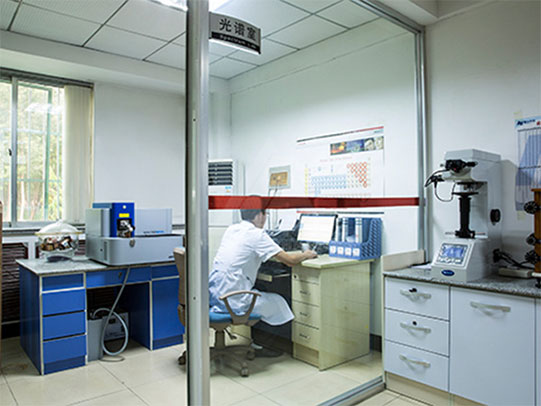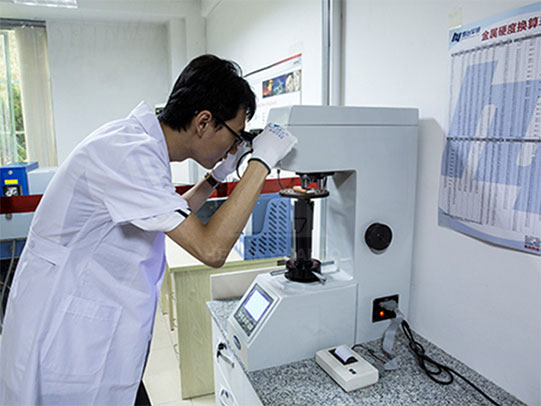Development and inspection of clad materials
Henan Chalco has set up a technology research and development center in combination with the leading advantages of Aluminum China in copper and aluminum industries, developed a large number of new processes, new technology research and new products for the production of metal composite materials, carried out nearly 100 technical innovations and research and development, achieved a series of achievements, achieved six major technological breakthroughs, and filled me in. A number of gaps in the production of metal clad materials have achieved remarkable social and economic benefits.
Henan Chalco has carried out strict quality testing on every batch of composite materials to ensure product quality and quality control. According to customer requirements, the inspection is mainly divided into destructive testing and non-destructive testing. Only when the test is qualified, the materials can be put into production. The annual research expenditure accounts for about 5% of sales revenue.
Destructive testing means that in order to test the properties of explosive composites, the original composites must be destroyed so that they can be sampled and processed into specimens for various testing purposes, and then the specimens are tested on the corresponding machines or instrumentation, and the qualitative and semi-definite results are obtained. Quantitative or quantitative performance data.
1. The peeling test separates the cladding layer and the base layer of explosive composite material forcibly with a sharp knife tool, then observes the interface state and estimates the bonding strength.
2. The shearing test puts the shearing sample together with the shearing die on the corresponding testing machine and breaks the joint surface in shearing form by pressure. The shearing stress determines the bonding strength of explosive composite materials.
3. Separation test puts the separated sample and the mold together on the testing machine, and breaks the joint surface in separate form by pressure, so as to judge the stress and determine the bonding strength of explosive composite materials.
4. The tensile-shear test fixes the tensile-shear specimens on the testing machine, and the tensile and shear fracture of the joint surface of the bimetal occurs simultaneously by the tensile force, so that the bonding strength of the explosive composite material can be determined by the breaking stress.
4. Tensile test fixes the tensile specimen on the testing machine, and then applies tensile force to it, resulting in the axial elongation of the specimen until rupture.
6. The impact test installs the impact sample on the impact testing machine, and breaks the groove of the joint surface or other position by the impact load, so as to determine the impact performance of the explosive composite material by the impulse energy consumed per unit area at the break.
7. Bending test This test is to install the bending specimen on the testing machine for bending test, to determine the bonding and processing properties of explosive composite materials by the predetermined bending angle or breaking bending angle.
8. Torsion test fixes the torsion specimen on the sample machine, and the explosive composite material is torsionally deformed by torsion force. The bonding and processing properties of the material are determined by the predetermined torsion angle or the torsion angle when the interface is delaminated.
9. Flattening test This test is to install the composite pipe sample on the test machine for flattening test. The flattening rate or the total pressure of the composite pipe with or without delamination, fracture and other abnormal phenomena in the matrix and interface indicate the bonding strength and processability of the composite pipe.
10. Cup protrusion test installs the Cup protrusion specimen on the testing machine to carry out the Cup protrusion test, and determines the Cup protrusion properties of some explosive or explosive+rolled composites by the predetermined back coating depth before breaking.
11. The fatigue test fixes the specimen on the testing machine and periodically changes the magnitude and direction of the stress, so that the explosive composite material will be fatigued and broken. The properties of the material can be determined by the breaking stress.
12. Creep test fixes specimens of certain shapes and sizes on the corresponding creep testing machine, and tests the creep limit of some explosive composites at room temperature or high temperature.
13. Microhardness test is used to measure and analyze the microhardness of the bonding zone and matrix of explosive composites, as well as other arbitrary positions, in order to determine the change and regularity of microhardness of the corresponding positions of the matrix material before and after explosive welding.
14. Chemical corrosion testing in a certain chemical corrosive medium and a certain temperature, pressure and other conditions, the explosive composite material samples for a certain period of time corrosion resistance test to corrode weight gain or weight loss, or service life to determine the corrosion resistance of this material under this condition.
15. Electrochemical corrosion test. Test method for determining the ability of an explosive composite sample to withstand electrochemical corrosion on the metal surface of the cladding and exposed weld metal in the corresponding electrolyte and at different electrode potentials.
16. Stress corrosion testing A method for determining the sensitivity of explosive composite materials with certain internal stress or prestress to profitable corrosion cracks under certain conditions of corrosive medium and temperature.
17. Intergranular corrosion tests were carried out on explosive composites under certain conditions to determine the corrosion tendency of grain boundaries and adjacent regions of metallic grains.
18. Cavitation corrosion test is a method to observe the stability of cladding metals under high-speed water flow and sediment under the condition of re-rotating explosive composites. It is a necessary test item for turbine blade and marine propeller of hydropower station to determine their corrosion resistance.
19. A method for determining the corrosion behavior of magnetostrictive cavitation in explosive composites under certain medium, temperature, plate current and working procedure
20. Spectroscopy is used for qualitative and quantitative analysis, determination and calculation of the chemical composition and microstructure of the bonding zone and other tissues of explosive composite materials.
Nondestructive testing
Testing of the properties of the original explosive composites without destroying them in principle.
1. surface quality inspection
2. knock test
3. Ultrasonic flaw detector is used to detect the bonding of explosive composites qualitatively and quantitatively.
4. thickness test
5. Air tightness test for explosive composite equipment, gas pressure difference to show the leakage of the test method.
6. Sealability test for explosive composite material manufacturing equipment, determine whether there is leakage, water and oil leakage, such as leakage inspection methods.
7. permeability test
8. Pressure inspection fills the vessel made of explosive composites with water or gas and increases the pressure at a certain speed.
9. Pressure Inspection A method of filling a container made of explosive composites with water, oil or gas and slowly pressurizing it to show leakage, pressure resistance, or damage.
10. electrical performance test
Henan Chalco has set up a technology research and development center in combination with the leading advantages of Aluminum China in copper and aluminum industries, developed a large number of new processes, new technology research and new products for the production of metal composite materials, carried out nearly 100 technical innovations and research and development, achieved a series of achievements, achieved six major technological breakthroughs, and filled me in. A number of gaps in the production of metal clad materials have achieved remarkable social and economic benefits.
Henan Chalco has carried out strict quality testing on every batch of composite materials to ensure product quality and quality control. According to customer requirements, the inspection is mainly divided into destructive testing and non-destructive testing. Only when the test is qualified, the materials can be put into production. The annual research expenditure accounts for about 5% of sales revenue.
Destructive testing means that in order to test the properties of explosive composites, the original composites must be destroyed so that they can be sampled and processed into specimens for various testing purposes, and then the specimens are tested on the corresponding machines or instrumentation, and the qualitative and semi-definite results are obtained. Quantitative or quantitative performance data.
1. The peeling test separates the cladding layer and the base layer of explosive composite material forcibly with a sharp knife tool, then observes the interface state and estimates the bonding strength.
2. The shearing test puts the shearing sample together with the shearing die on the corresponding testing machine and breaks the joint surface in shearing form by pressure. The shearing stress determines the bonding strength of explosive composite materials.
3. Separation test puts the separated sample and the mold together on the testing machine, and breaks the joint surface in separate form by pressure, so as to judge the stress and determine the bonding strength of explosive composite materials.
4. The tensile-shear test fixes the tensile-shear specimens on the testing machine, and the tensile and shear fracture of the joint surface of the bimetal occurs simultaneously by the tensile force, so that the bonding strength of the explosive composite material can be determined by the breaking stress.
4. Tensile test fixes the tensile specimen on the testing machine, and then applies tensile force to it, resulting in the axial elongation of the specimen until rupture.
6. The impact test installs the impact sample on the impact testing machine, and breaks the groove of the joint surface or other position by the impact load, so as to determine the impact performance of the explosive composite material by the impulse energy consumed per unit area at the break.
7. Bending test This test is to install the bending specimen on the testing machine for bending test, to determine the bonding and processing properties of explosive composite materials by the predetermined bending angle or breaking bending angle.
8. Torsion test fixes the torsion specimen on the sample machine, and the explosive composite material is torsionally deformed by torsion force. The bonding and processing properties of the material are determined by the predetermined torsion angle or the torsion angle when the interface is delaminated.
9. Flattening test This test is to install the composite pipe sample on the test machine for flattening test. The flattening rate or the total pressure of the composite pipe with or without delamination, fracture and other abnormal phenomena in the matrix and interface indicate the bonding strength and processability of the composite pipe.
10. Cup protrusion test installs the Cup protrusion specimen on the testing machine to carry out the Cup protrusion test, and determines the Cup protrusion properties of some explosive or explosive+rolled composites by the predetermined back coating depth before breaking.
11. The fatigue test fixes the specimen on the testing machine and periodically changes the magnitude and direction of the stress, so that the explosive composite material will be fatigued and broken. The properties of the material can be determined by the breaking stress.
12. Creep test fixes specimens of certain shapes and sizes on the corresponding creep testing machine, and tests the creep limit of some explosive composites at room temperature or high temperature.
13. Microhardness test is used to measure and analyze the microhardness of the bonding zone and matrix of explosive composites, as well as other arbitrary positions, in order to determine the change and regularity of microhardness of the corresponding positions of the matrix material before and after explosive welding.
14. Chemical corrosion testing in a certain chemical corrosive medium and a certain temperature, pressure and other conditions, the explosive composite material samples for a certain period of time corrosion resistance test to corrode weight gain or weight loss, or service life to determine the corrosion resistance of this material under this condition.
15. Electrochemical corrosion test. Test method for determining the ability of an explosive composite sample to withstand electrochemical corrosion on the metal surface of the cladding and exposed weld metal in the corresponding electrolyte and at different electrode potentials.
16. Stress corrosion testing A method for determining the sensitivity of explosive composite materials with certain internal stress or prestress to profitable corrosion cracks under certain conditions of corrosive medium and temperature.
17. Intergranular corrosion tests were carried out on explosive composites under certain conditions to determine the corrosion tendency of grain boundaries and adjacent regions of metallic grains.
18. Cavitation corrosion test is a method to observe the stability of cladding metals under high-speed water flow and sediment under the condition of re-rotating explosive composites. It is a necessary test item for turbine blade and marine propeller of hydropower station to determine their corrosion resistance.
19. A method for determining the corrosion behavior of magnetostrictive cavitation in explosive composites under certain medium, temperature, plate current and working procedure
20. Spectroscopy is used for qualitative and quantitative analysis, determination and calculation of the chemical composition and microstructure of the bonding zone and other tissues of explosive composite materials.
Nondestructive testing
Testing of the properties of the original explosive composites without destroying them in principle.
1. surface quality inspection
2. knock test
3. Ultrasonic flaw detector is used to detect the bonding of explosive composites qualitatively and quantitatively.
4. thickness test
5. Air tightness test for explosive composite equipment, gas pressure difference to show the leakage of the test method.
6. Sealability test for explosive composite material manufacturing equipment, determine whether there is leakage, water and oil leakage, such as leakage inspection methods.
7. permeability test
8. Pressure inspection fills the vessel made of explosive composites with water or gas and increases the pressure at a certain speed.
9. Pressure Inspection A method of filling a container made of explosive composites with water, oil or gas and slowly pressurizing it to show leakage, pressure resistance, or damage.
10. electrical performance test
| Major equipment for R & D and quality inspection |
| Metallurgical microscope |
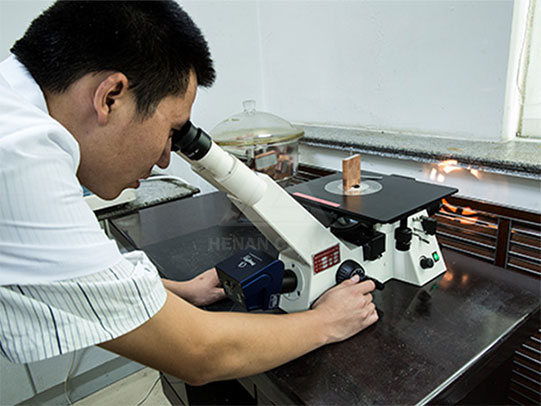
|
| Analytical balance |
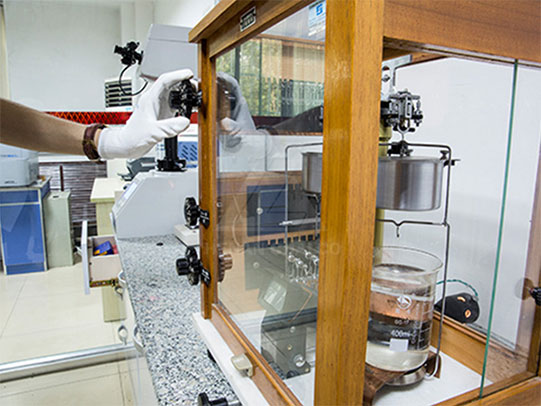
|
| Spectrum analyzer |
|
|
| Bush hardness tester |
|
|
| Eddy current conductivity tester |
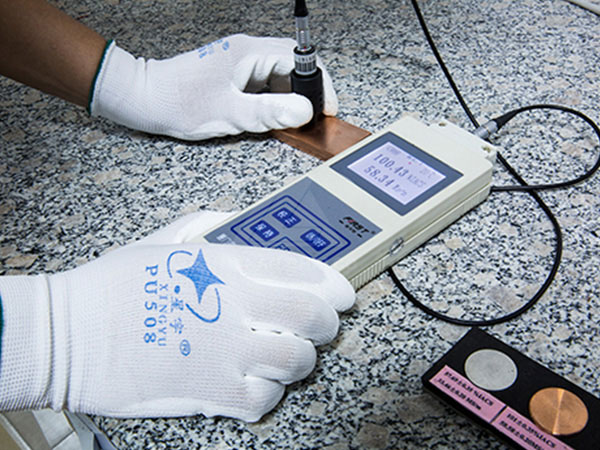
|
| Metallographic Microscope |
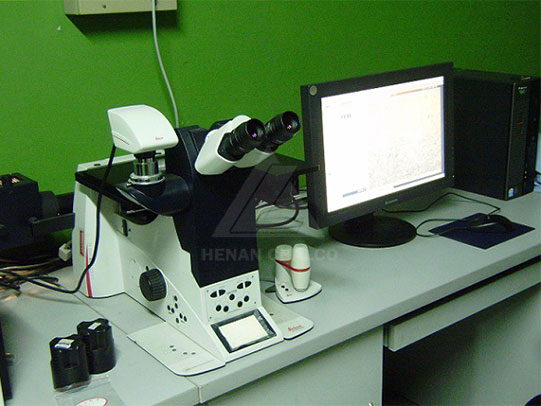
|
| Impact testing machine |
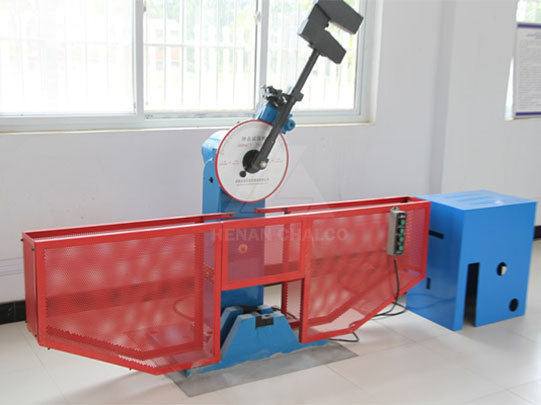
|
| Impact sample cryogenic tank |
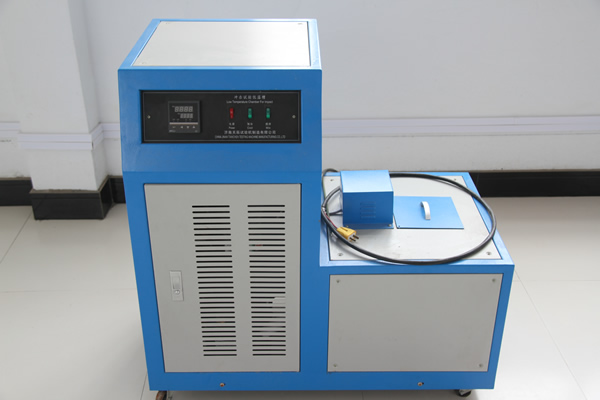
|
| Notched broaching machine |
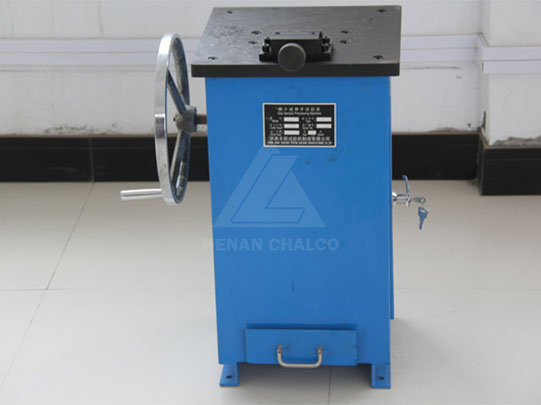
|
| Tensile testing machine |
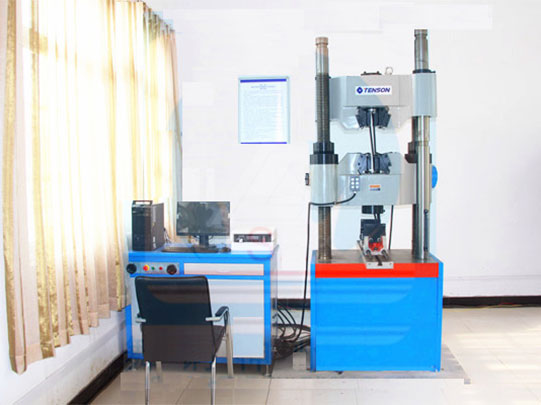
|
| Flaw detector |
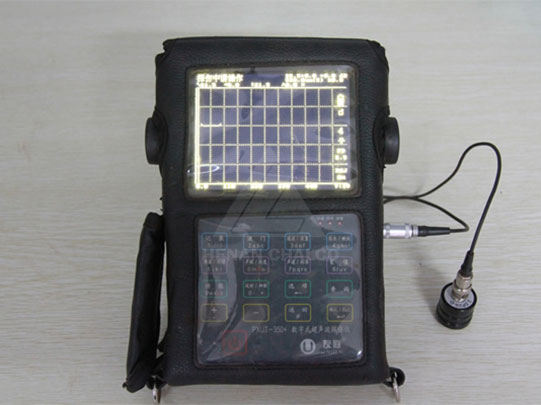
|
| WEW-600B screen display hydraulic universal testing machine |
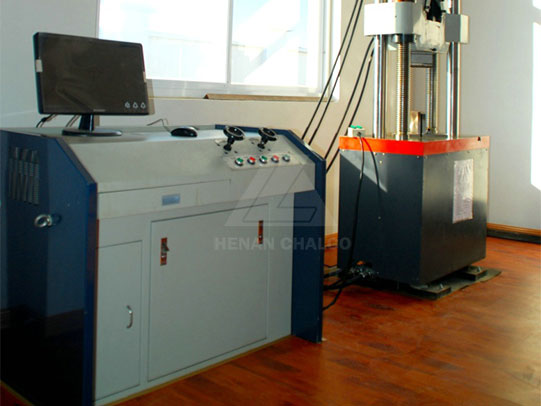
|
| Genius5000 energy dispersive X fluorescence spectrometer |
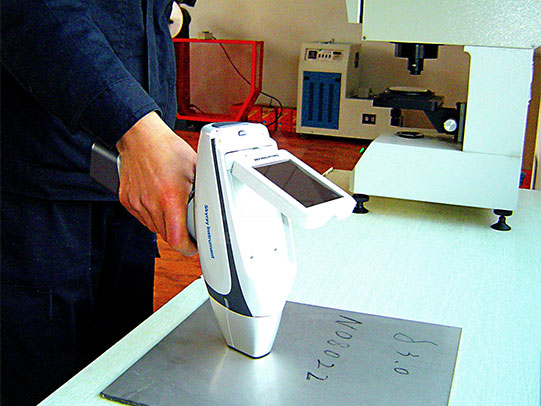
|
| CS-8610 infrared carbon and sulfur analyzer |
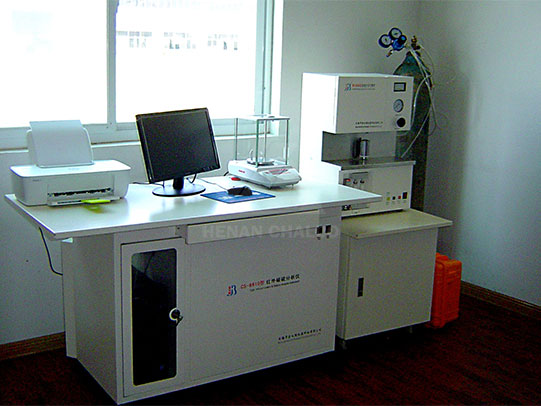
|





